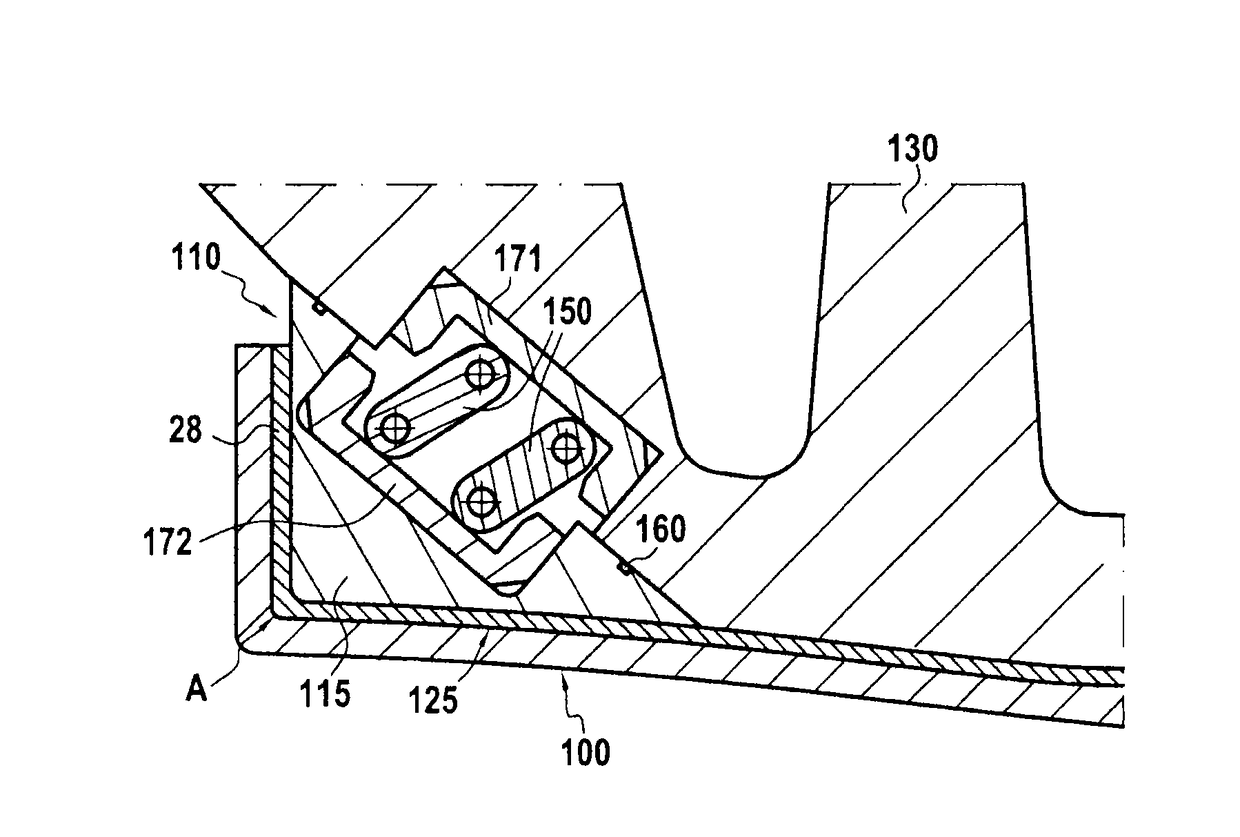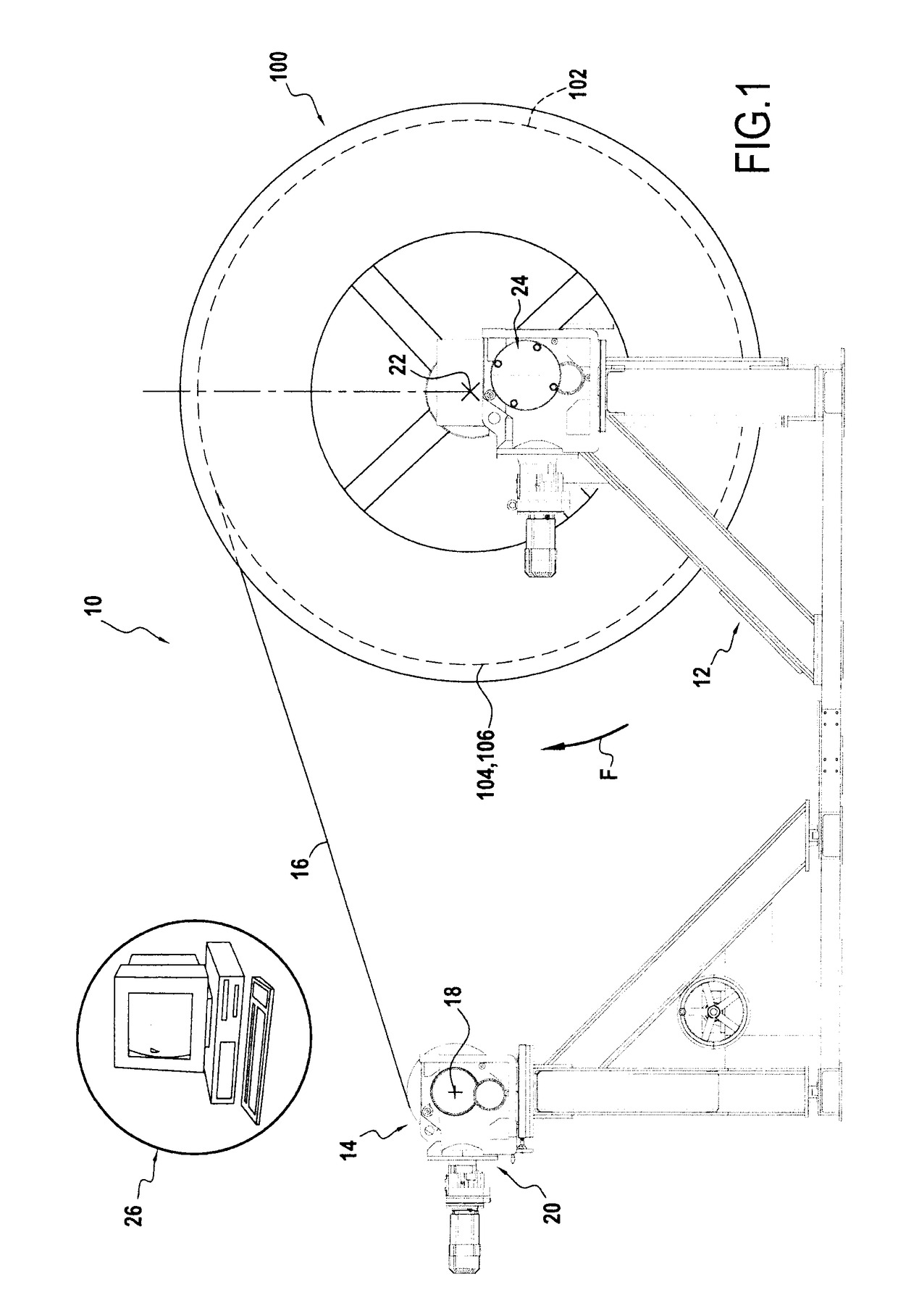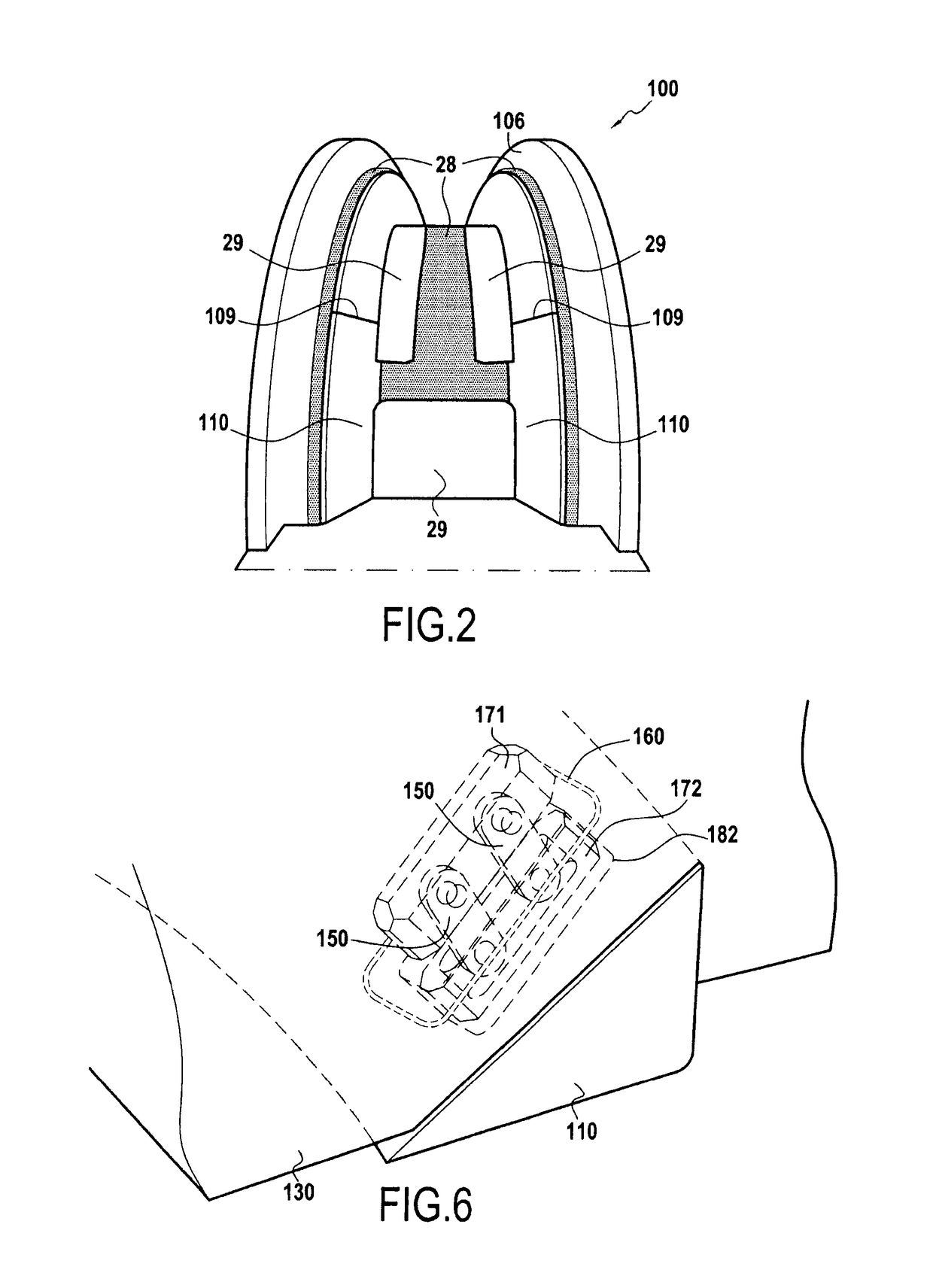Device for fabricating a composite material part
a composite material and device technology, applied in the field of devices for fabricating composite materials, can solve the problems of irregular structure of the casing, uneven resin mass between the layers, and compact defects, and achieve the effect of disturbing the assembly operation
- Summary
- Abstract
- Description
- Claims
- Application Information
AI Technical Summary
Benefits of technology
Problems solved by technology
Method used
Image
Examples
Embodiment Construction
)
[0034]An embodiment is described in detail below with reference to the accompanying drawings. This embodiment shows the characteristics and advantages of the invention. Nevertheless, it should be understood that the invention is not limited to this embodiment. In particular, although the invention is described below in the context of its application to fabricating an aeroengine fan casing, the invention is not limited to that application.
[0035]An implementation of a method of fabricating a fan casing is described in document EP 1 961 923, to which reference may be made.
[0036]Briefly, the fabrication method described in EP 1 961 923 consists in making a fiber strip or sheet by three-dimensional weaving with warp take-up on a drum, referred to below as the “take-up mandrel”. The fiber sheet as made in this way is subsequently transferred onto the mandrel of a resin injection mold, referred to below as the “impregnation mandrel”, with the outside shape of this mandrel matching the ins...
PUM
| Property | Measurement | Unit |
|---|---|---|
| angle | aaaaa | aaaaa |
| reentrant angle | aaaaa | aaaaa |
| circumference | aaaaa | aaaaa |
Abstract
Description
Claims
Application Information
 Login to View More
Login to View More - R&D
- Intellectual Property
- Life Sciences
- Materials
- Tech Scout
- Unparalleled Data Quality
- Higher Quality Content
- 60% Fewer Hallucinations
Browse by: Latest US Patents, China's latest patents, Technical Efficacy Thesaurus, Application Domain, Technology Topic, Popular Technical Reports.
© 2025 PatSnap. All rights reserved.Legal|Privacy policy|Modern Slavery Act Transparency Statement|Sitemap|About US| Contact US: help@patsnap.com



